Introduction to the flavor characteristics of coffee bean producing areas in the world recommended by novice entry-level coffee bean brands
Professional coffee knowledge exchange more coffee bean information please follow the coffee workshop (Wechat official account cafe_style)
What are coffee rations and beans?
Next, the front street coffee will come and say to you one by one:
First of all, why are there "rations beans"?
This is because beginner coffee fans are very confused about how to choose coffee beans that suit their taste, and they buy blindly and worry about stepping on thunder, so the loss outweighs the gain, so Qianjie Coffee launched coffee rations beans. It is also the facade of Qianjie coffee, because the flavor of its producing area is more recognizable. Qianjie will select the beans with the most local flavor in each major producing area for 100g taste packaging, such as the citric acid of the most representative famous coffee Essiega, the herbal flavor of Mantenin in Indonesia, the chocolate and nutty aroma of Costa Rican Tara beads, and so on. So far, Qianjie has seven new national production areas for everyone to choose from.

In addition, most of the former street grain beans are washed, this is because the water washing method can better lock the original basic taste of coffee and cherries, and it is also the beginning of the understanding of the flavor of the producing area.
The following Qianjie Coffee introduces the washing process to coffee fans:
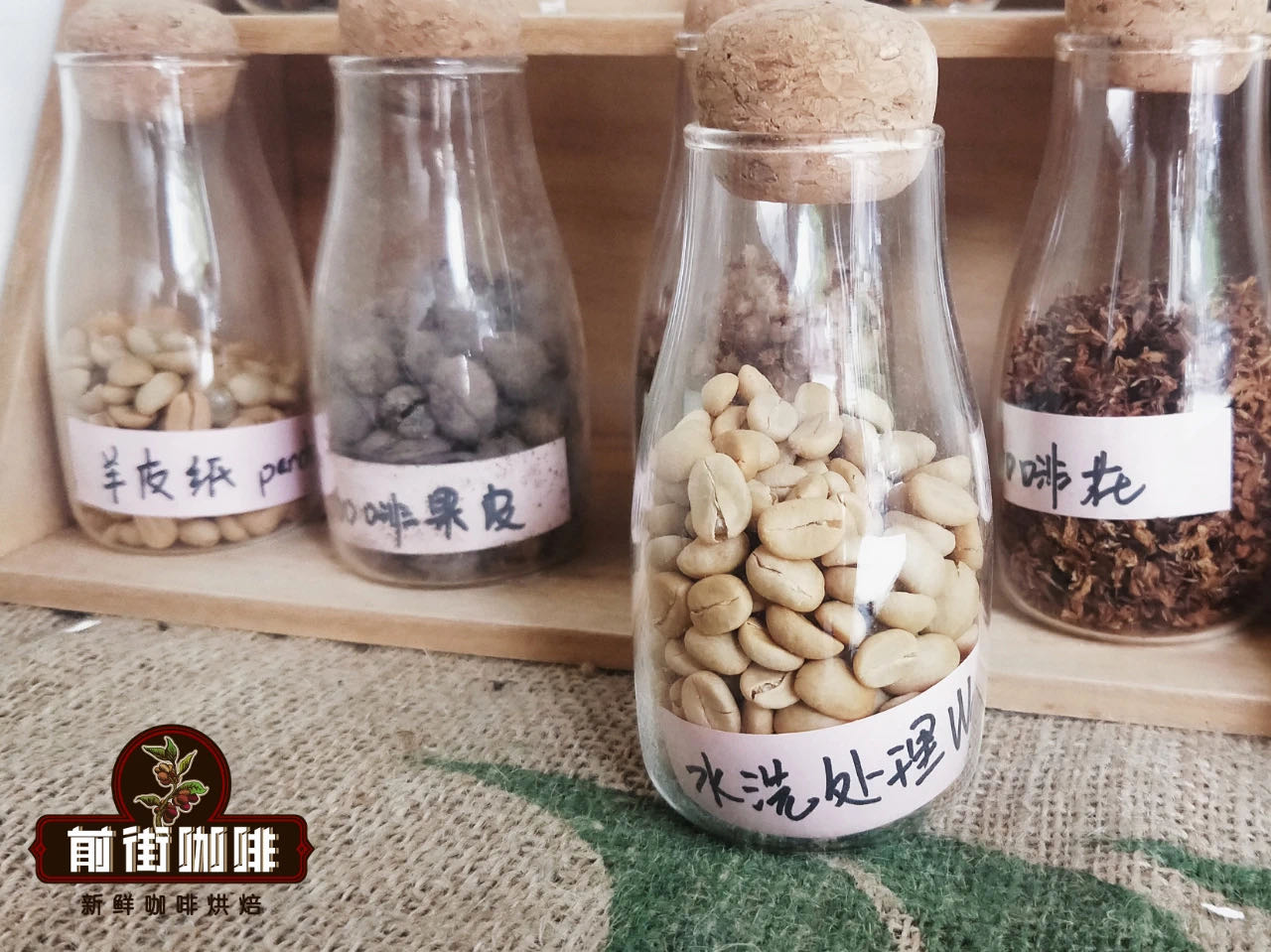
1. Choose beans: put the harvested fruit in a large tank, the ripe fruit will sink, and the immature or overripe fruit will float on the surface.
two。 Remove the pulp: use a machine to remove the peel and pulp, leaving only coffee beans coated with pectin. The process of washing is to wash this layer of pectin.
3. Fermentation: pectin has strong adhesion and is not easy to remove. It must be placed in a tank for about 18-36 hours and fermented and decomposed by microorganisms.
4. Washing: put the fermented beans into the pool and wash them back and forth, using the friction force between the beans and the water to wash the coffee beans.
5. Drying: after washing, the moisture content of coffee beans reaches 50%, which must be dried so that its moisture content is reduced to 12%, otherwise it will become moldy and corrupt due to high moisture content. The best treatment is to use sunlight to dry, although it takes 1-3 weeks, but the flavor is good. In some places, machines are used to dry, greatly shortening the processing time, but the flavor is relatively inferior to that of sun-dried coffee beans.
6. Shelling: after the dried coffee beans are stored in the warehouse for a week (to stabilize the moisture content), they are handed over to the factory for shelling and sheep skin removal.
7. Selection and grading: remove defective beans, ensure better quality, and then give them to exporters to sell all over the world.
Next, Qianjie Coffee will introduce these seven kinds of coffee beans with regional coffee flavor in detail.
Wash Yega Xuefei grain and beans in front of the street

Country: Ethiopia
Producing area: Yega Xuefei
Altitude: 1800-2000m
Variety: native species
Treatment: washing treatment
Bean shape: small grain species, the shape is relatively round, the bean body is very small
Flavor: Jasmine, lemon, citrus berries

Yega Sheffield Coffee is the most representative coffee in Ethiopia and is highly regarded by coffee connoisseurs all over the world. Therefore, such a good variety of coffee, Qianjie of course to share with you!
Located on the east side of the East African Rift Valley, Yejasuefei is a small town in Ethiopia's Sidamo province. It is divided separately because of the unique flavor of the coffee it produces, at an altitude of 1700-2100 meters. It is one of the highest coffee-producing areas in the world and is synonymous with Ethiopian boutique coffee.
At first, the coffee trees of Yejasuefei were planted by monastic academics in Europe, but later they were planted by farmers or cooperatives, mostly in their own backyards or mixed with other crops in the farmland. the yield of each household is not much, and it is a typical pastoral coffee. These mountain villages that produce coffee cherries are foggy, like spring all year round, and the summer breeze is slow, cool but not hot, rain but not damp, and winter is not cold. Therefore, the floral aroma and citrus or lemon acid notes of Yejashefi coffee fruit are very obvious. Washed beans taste fragrant, sour and bright, and the sense of tea is obvious. Qianjie thinks that only this kind of geographical climate can give birth to this unique regional flavor of citrus and flowers.
At the same time, Yejia Xuefei is also the representative of coffee beans that choose flower-scented fruit to mix coffee flavor.
In fact, in the traditional process, Yejia Xuefei uses the oldest method of sun treatment, but because most of the early sun-dried coffee beans are dried on the flat ground, they are inevitably contaminated with miscellaneous smells such as dirt, coupled with the lack of reasonable screening, the quality of sun-dried beans is average. It was not until 1972 that Ethiopia introduced Central and South American washing technology to improve the quality of coffee, which made the jasmine and citrus lemon aromas of Yega Xuefei clearer and brighter, and became one of the representatives of fine coffee in the world.
Qianjie is also considering that the washing treatment will better reflect the cleanliness of the coffee taste and the purity of the flavor, so when analyzing the specific flavor of a coffee producing area, it will take the washed beans in that area as a reference. If the guests have not drunk Yejia Xuefei, Qianjie will also give priority to the water-washed Yejia Xuefei, which will help to form the understanding of the flavor of the producing area, and then try the Yejia Xuefei, which is treated by tanning, honey treatment and so on. can have a direction of comparison.
The front street Columbia Huilan food beans

Country: Colombia
Producing area: Huilan
Altitude: 1500-1800m
Variety: Kaddura
Treatment: washing treatment
Bean shape: the bean eye is uniform, and the bean shape is more full.
Flavor: nut dark chocolate caramel soft fruit acid

Colombia is located in the northwest of the South American continent, bordering Central America and Panama. In 1808, a priest introduced coffee to Colombia for the first time from the French Antilles via Venezuela. Today, Colombia is the world's third largest coffee exporter, mainly producing Arabica coffee beans and the largest exporter of Arabica coffee beans. Colombia is rich in products. Coffee, flowers, gold and emeralds are known as the "four treasures".
In Colombia, the most important cultivation area is the southwest Huilan area, which belongs to the mountain terrain, and coffee is planted on the canyon slope. the climate of the canyon slope not only prevents the cold wind from blowing in, but also has no high temperature. Rain Water is also relatively abundant, it can be said that the unique coffee cultivation area of Colombia Huilan coffee, and the workers are hand-picked coffee fruit cherries. Therefore, it can be carefully selected to pick the most mature and full fruit.
According to Qianjie, the early varieties of coffee grown in Colombia were iron pickup and bourbon. Kaddura, a natural variety of Arabica bourbon, was discovered in Brazil in 1937. Its tree is not as tall as bourbon and smaller. Due to inheriting the blood of bourbon, the resistance is weak, but the yield is higher than that of bourbon. Although found in Brazil, Kaddura is not suitable for growing in Brazil, so it is not planted on a large scale in Brazil, but is popular in Central and South America, such as Colombia, Costa Rica and Nicaragua. Kaddura is planted on a large scale. The Colombian iron pickup and bourbon species gradually began to be replaced by Kaddura in 1970, because Kaddura was not only more productive per plant, but also more compact, allowing more coffee trees per unit area. And Qianjie this coffee bean is the Kaddura variety.
Qianjie, Costa Rica Tarazu
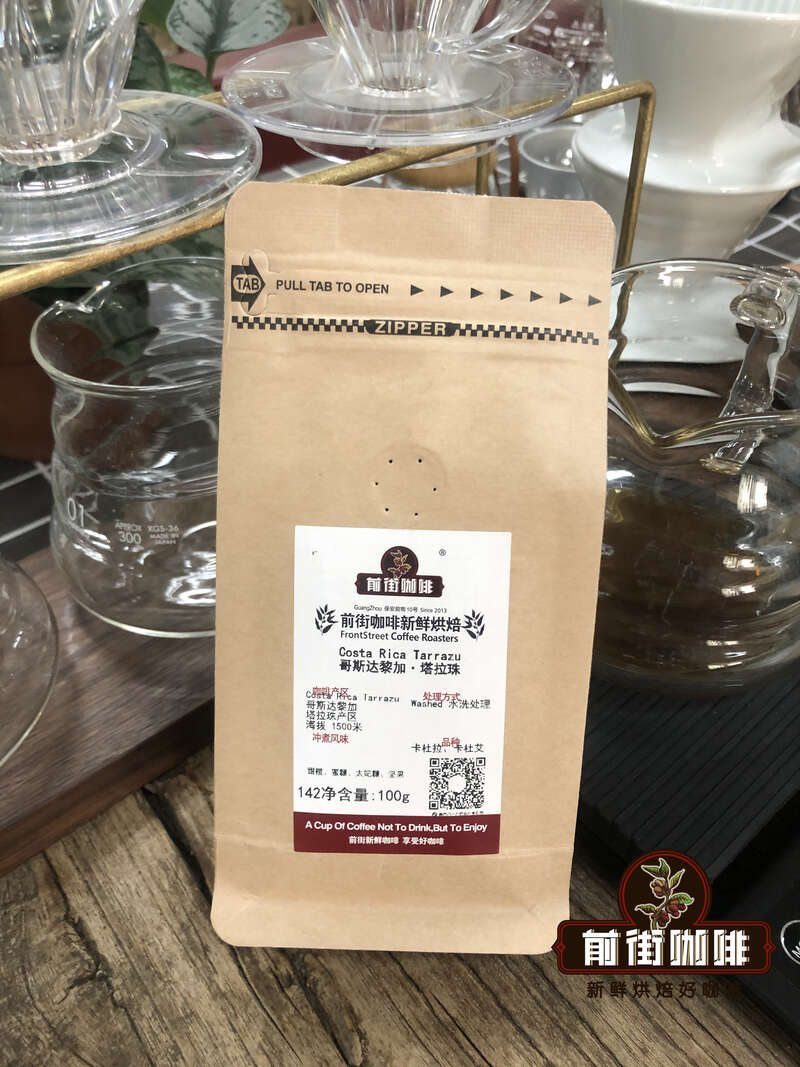
Country: Costa Rica
Producing area: Tarazhu
Altitude: 1500m
Variety: Kaddura Kaduai
Treatment: washing treatment
Shape of beans: different sizes
Flavor: orange honey taffy nuts
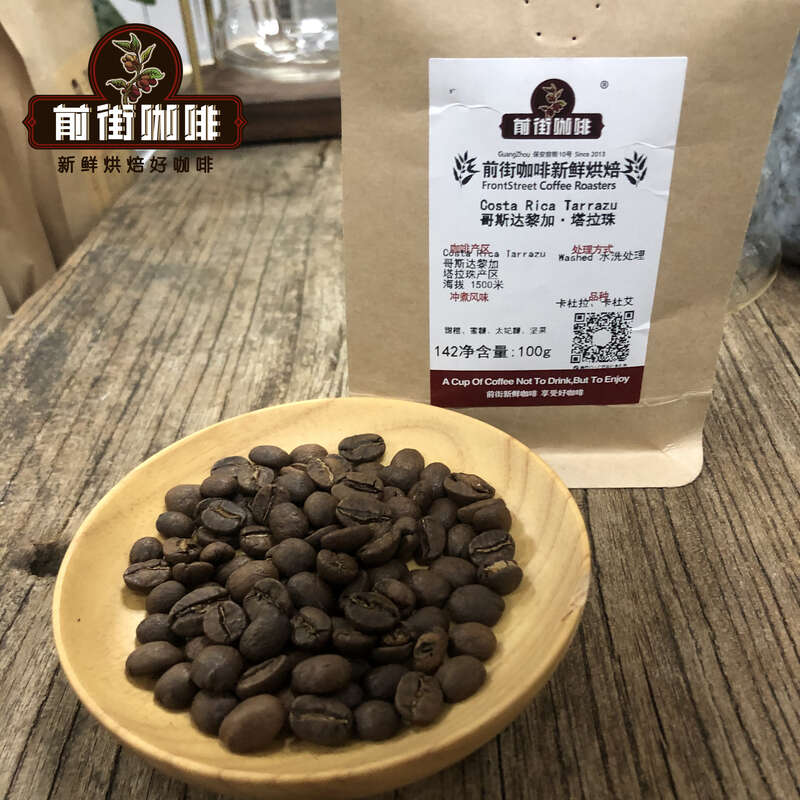
Costa Rica is located in the Central American isthmus and belongs to North America. It is adjacent to Panama, with Nicaragua to the north, the Caribbean to the northeast and the Pacific Ocean to the south. Influenced by ocean currents such as the Pacific Ocean and monsoons, Costa Rica has formed a unique microclimate.
Costa Rica's large temperature difference between day and night, abundant precipitation, and the weak acid and fertile soil nurtured by volcanoes all provide excellent conditions for growing coffee, so although Costa Rica is small, but it is indeed one of the most species-rich countries in the world, rich in natural resources, Qianjie believes that Costa Rica is indeed worthy of the Spanish transliteration "rich coast"! Among them
There are seven representative producing areas in Costa Rica: West Valley in the western valley, Central Valley in the central valley, Tarrazu in Tarazu, Tres Rios in the Sanshui River, Orosi in Europe, Brunca in Brenka, and Turrialba in Duli Alba.
The Tarazhu producing area is the most representative, it is located in the south of San Jose, the capital of Costa Rica, is the most important coffee producing area. Most of the best coffee in Costa Rica comes from secondary production areas. Take the result of the Costa Rica COE Excellence Cup in 2020 as an example, nine of the top 26 coffee beans came from the Tarazhu producing area, and three of them won the top three respectively. It is conceivable that the Tarazhu producing area is a veteran of producing high-quality coffee. Costa Rican coffee is also famous for its balanced flavor, rich chocolate and smooth taste.
The link between Kaddura and Kaduai is that Kaddura, a natural variant of the Arabica variety Bourbon, was discovered in Brazil in 1937. Its tree is not as tall as bourbon and smaller. Due to inheriting the blood of bourbon, the resistance is weak, but the yield is higher than that of bourbon. Although found in Brazil, Kaddura is not suitable for growing in Brazil, so it is not planted on a large scale in Brazil, but is popular in Central and South America, such as Colombia, Costa Rica and Nicaragua. Kaddura is planted on a large scale.
Kaduai is a hybrid of New World and Kaddura. It not only inherits the advantage of the low body of Kaddura tree, but also makes up for the defect of Kaddura's weak fruit without the wind. The result is solid and not easy to fall when the strong wind blows. The biggest regret is that its overall flavor is slightly more monotonous than Kadura. Kaduai also has the difference between red fruit and yellow fruit, and red fruit has a better flavor than yellow fruit. Kaduai, Kaddura, New World and bourbon are the four main varieties of coffee in Brazil.
The front street of Guatemala Vivette Nanguo

Country: Guatemala
Producing area: Vivette Nanguo
Altitude: 1500-2000m
Variety: Bourbon Kaddura Kaduai
Treatment: washing treatment
Bean shape: the bean body is more uniform.
Flavor: nuts, lemon peel, berries, citrus
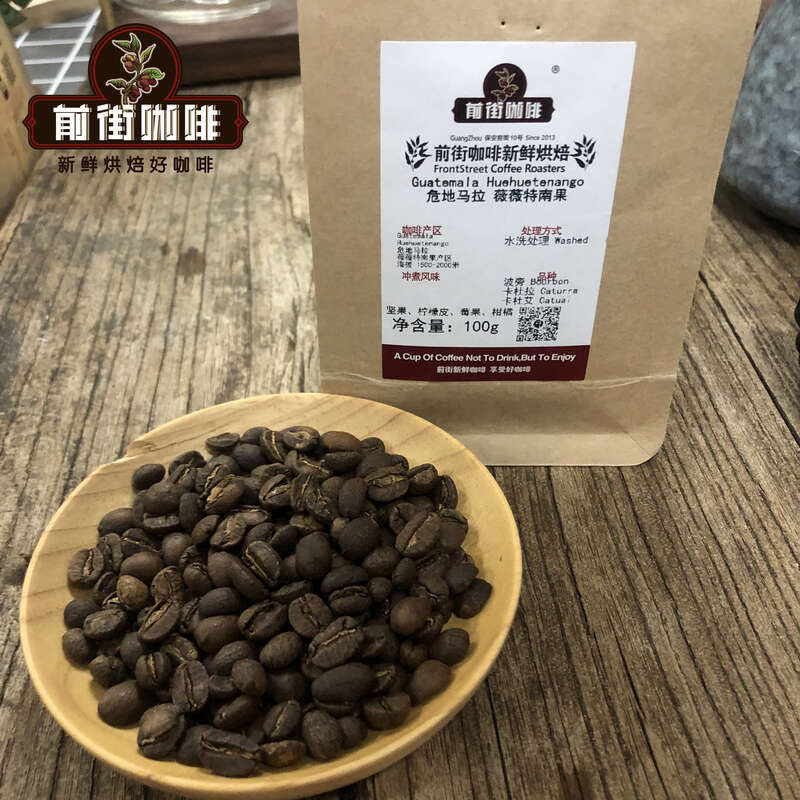
The coffee produced in Guatemala is one of the top coffees in the world, mainly bourbon, Tibica, Kaddura and Kaduai, and the coffee belt is mainly distributed above 1500 meters above sea level. sitting on the tropical rain forest, volcanic geology and changeable micro-climatic conditions, the coffee beans produced in this region have a unique flavor.
Guatemala produces fruity coffee beans, which are famous for their elegance, acidity, cleanliness and distinct layers. For most of the 20th and 21st centuries, Guatemala was rated as the largest coffee producer in Central America. Guatemala has eight major producing areas, which are commonly used to describe the highest level of S.H.B. Coffee, among them, coffee from five volcanic and three non-volcanic producing areas
It is unique and enjoys a high reputation in the international market.
Among the three non-volcanic coffee producing areas in Guatemala, the Mini Tenanguo Highland has the driest climate and the highest elevation. Although there are many highlands in Guatemala, among the coffee producing areas, only Vivette Nanguo can be called Viveit Nanguo Highland. The coffee flavor in this area is typical of S.H.B. Coffee beans can be called the champion of Guatemalan coffee.
It is also very interesting not to mention the name of Vivette Nango area in Qianjie. The name comes from Nahuatl, which means: the land of the ancients (or ancestors). The region has the highest non-volcanic mountains in Central America, so it is quite suitable for coffee cultivation. The area relies heavily on coffee exports and produces a lot of amazing coffee.
Qianjie Yunnan Xiaogi
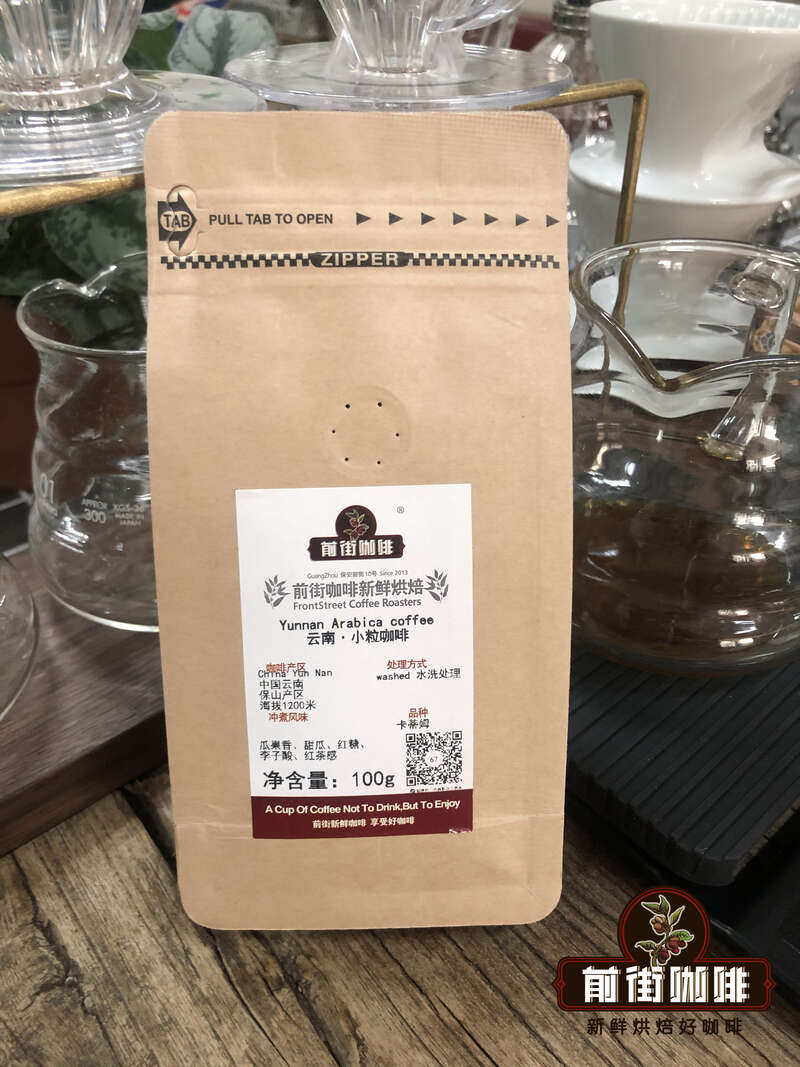
Country: China
Producing area: Baoshan, Yunnan
Altitude: 1200m
Variety: Katim
Treatment: washing treatment
Bean shape: round and full
Flavor: sweet melon, sweet melon, brown sugar, plum acid black tea
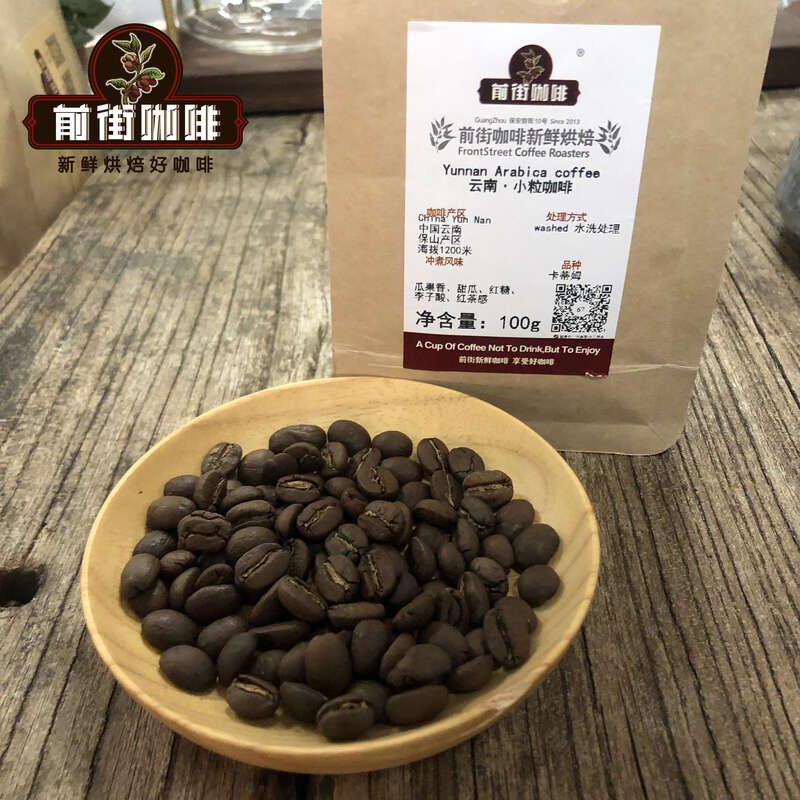
In 1892, a French missionary brought coffee to Yunnan from Vietnam and successfully planted it in a valley in Binchuan County, Yunnan Province. This is the beginning of Yunnan coffee, commonly known as small seed coffee and Yunnan small grain coffee in China.
In 1959, the Portuguese moved the Brazilian bourbon mutant Kaddura to East Timor to mix with Tim timor, who was of Robusta descent, and succeeded in breeding a disease-resistant and highly productive Kadim. As leaf rust affects coffee-producing countries around the world, with the help of international organizations, countries vigorously promote Katim to fight leaf rust and increase production capacity. Thus it can be seen that Katim contains Robusta blood, which can be distinguished from the pure Arabica tin truck in flavor. In the domestic Yunnan raw bean competition, Katim won the top 10 gold list, but the quality of the undisputed Arabica variety can not be seen, because there are so few people, which gives people the impression that Katim in Yunnan should not be underestimated. Later, Catimor was in Yunnan Province.
Coffee growing areas, Dehong, Baoshan, Pu'er, Xishuangbanna, Lincang, Wenshan, Yuxi and other places for large-scale promotion and planting.
Qianjie coffee also planted iron pickup and a small amount of bourbon in Yunnan plantations. Of course, there was no conflict between Katim and tin pickup, one is mass production, the other is fine, the existence of high-quality products is to improve quality, the significance of mass production is to increase production, while Yunnan will choose Katim as the main, but also see the purpose behind it.
Qianjie Manning, Indonesia
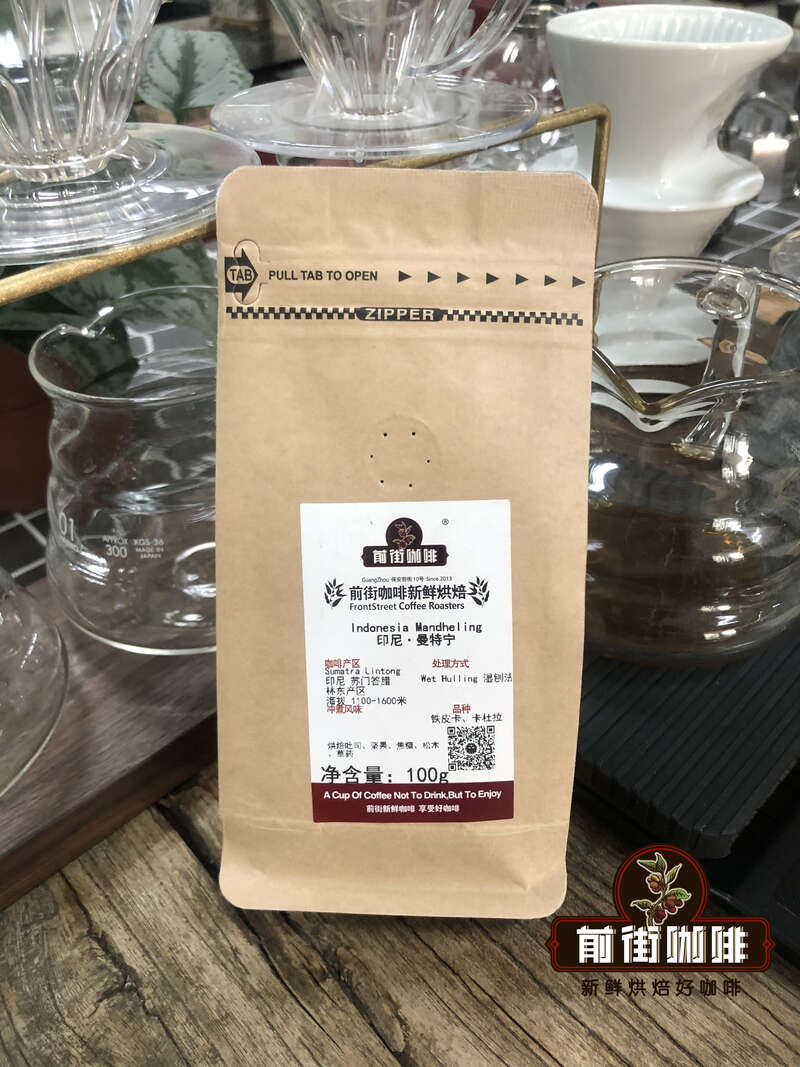
Country: Indonesia
Producing area: Lindong, Sumatra
Variety: iron pickup Kaddura
Treatment method: wet planing method
Bean shape: there are many cracks in appearance.
Flavor: baked toast, nuts, caramel, pine herbs

Most of the boutique coffee is named after the producing area, region or port, while Manning is named after the nation. It is a phonetic mistranslation of the Mandainin people in Indonesia, and the origin of the name is a very interesting short story. Legend has it that during the Japanese occupation of Indonesia during World War II, a Japanese soldier drank a cup of mellow coffee in an Indonesian cafe. He asked the owner the name of the coffee, but the owner of the coffee shop thought he was asking, "where are you from?" so he answered "Mandaining." After the war, the Japanese soldiers could not forget the "Mantenin" they had drunk in Indonesia for a long time, so they sent 15 tons of Indonesian coffee to Japan, but it was unexpectedly very popular in the Japanese market. As a result, the name "Manning" spread. And that coffee merchant is the famous Pwangni Coffee Company.
Looking through the materials in front of the street, we know that Mantenin is nicknamed "Sumatran Coffee", North Sumatra mostly produces Gayo, Lake Tawa, which is dominated by ateng varieties, can be called Aceh Coffee or Lake Tawa (Tawar lake) Coffee, and the area between Lintong and Toba lake Lake in South Sumatra can be called Mantenin. Lindong is the producing area of Mantenin, and the best mantenin varieties have four varieties: Sidikalang, Bergendar, Siborong borong and Telok Sanggul.
Mantenin is a high-quality coffee bean growing in the plateau and mountain area of 750-1500 meters above sea level. It is a rare Arabica species in Indonesia, which mainly produces Robusta. Because of various environmental factors such as altitude and climate, the coffee beans planted are rich in aroma, rich in taste and strong in taste, with some slightly chocolate and syrup flavor.
In Indonesia, due to the climatic conditions in the Lindong area of Sumatra, the farming level of coffee farmers, and various factors of precious local water resources, Mantenin was initially treated with sunlight, but the quality was unstable, so it was changed to a half-sun method similar to that in Brazil. However, the climate in Indonesia is so humid that it is impossible for Brazil to take out sticky pods and dry them outdoors for 2 to 3 days. In Indonesia, this will make the pods moldy, so within a few hours to a day of drying, the moisture content will be reduced to 2030%, and the pectin will be purchased by bean merchants before it is solidified. Bring it back to the simple processing plant to remove the pectin by machine, so as to prevent the pectin from excessive fermentation and sour smell. This is the wet planing method, the first thing is to scrape off the pectin layer before the Mantenin pods are dry (this is the main reason why the Mantenin fruit has low acidity and high mellowness. After a little drying, the water content of the coffee cherries in the pods will be about 18%. Finally, the exporters of Medan will come to purchase the undried pods, place them in a large drying farm or dry them by machine until the water content is 12%. It can be seen that Manning's drying process is very tedious, because farmers lack of hard equipment, using farmers, bean collectors and exporters three-stage division of labor to dry. Therefore, Mantenin produces the unique aroma of herbs and sunken wood, which is caused by high humidity and drying pectin layer in three stages. This is also a rare wet planing method in the world, which accidentally creates Mantenin's low-acid, thick and smelly flavor. So in these seven kinds of front street food beans, you might as well taste the special wet planing treatment of Farmantney, I believe those who have tasted it will not forget this taste!
Qianjie Brazilian red fruit
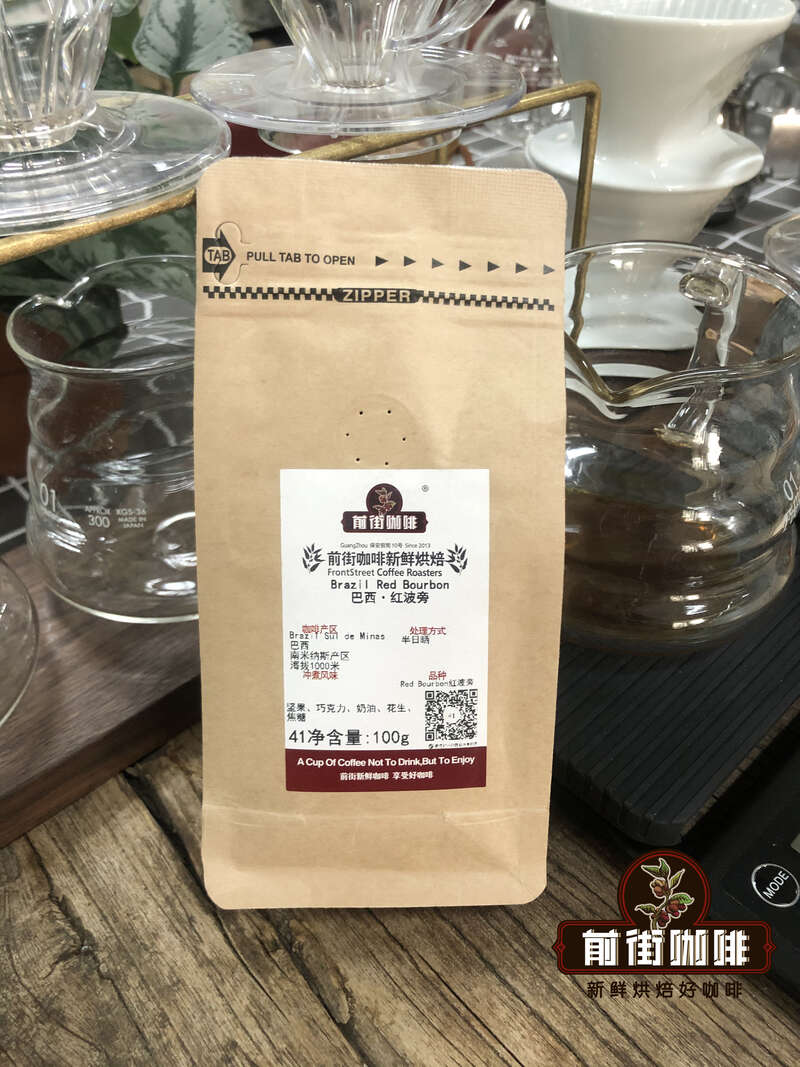
Country: Brazil
Producing area: South Minas
Altitude: 1000m
Variety: red bourbon
Treatment: half-sun
Bean shape: oval
Flavor: nut chocolate cream peanut caramel

Brazilian coffee beans were introduced from French Guiana (a country in northern South America) in 1720. Brazil was then a colony of Portugal, while many of the other South American countries were colonies of Spain, so most of the countries in South America spoke Spanish, while Brazil spoke Portuguese.
In order to introduce Guyanese coffee beans to Brazil (which was severely prohibited from other countries at the time), Portuguese officers stationed in Brazil captured the heart of the Guyanese governor's wife and succeeded in bringing coffee seeds to Brazil. Since then, coffee has adapted quickly in Brazil, spreading from the north to the southeastern state of Sao Paulo, and by 1845, Brazilian beans accounted for 45% of the world's coffee beans.
At present, Brazil is the largest coffee exporter in the world. The topography of Brazil is mainly divided into two parts, one is the Brazilian plateau above 500 meters above sea level, distributed in the central and southern parts of Brazil, and the other is the plain below 200 meters above sea level, mainly in the north and west of the Amazon River basin.
Coffee beans grown in Brazil include Arabica coffee beans and Robusta coffee beans, of which Arabica boutique coffee beans are mainly grown in the states of Sao Paulo and Minas Gerais. Robusta coffee beans are mainly distributed in Espiritu Santo, Bahia, Langdonia and other states.
The "Brazilian rations beans" in Qianjie comes from Minas Gerais. The representative coffee producing areas of Minas Gerais are Syrador and South Minas, both of which are high above sea level, with rich landforms, obvious dry and wet seasons, and a large temperature difference between day and night. Rao rich microclimate, suitable for the cultivation of elegant red bourbon and yellow bourbon, the manor that has won the extraordinary Cup bidding in Brazil since 1999. South Minas has the largest number. Therefore, South Minas has naturally become the main producing area of Brazilian boutique coffee.
Just before 1990, Brazil almost adopted rough sunbathing. This is the culprit that makes Brazilian beans easy to catch the smell of sour and rotten wood, because during the 2-3 weeks of exposure, the coffee fruit will become moldy and smell when the rain returns to the tide or the fruit is cracked. This problem has long been criticized and dealt a heavy blow to the image of Brazilian coffee. So after 1990, according to the drier climate in Brazil, Brazilian research units developed a half-sun method to shorten the treatment time. First, after screening the suitable coffee fruit, remove the peel, pulp and part of the pectin, expose it to the sun with a small amount of pectin for 1-3 days, then dry it with a machine until the moisture content is 12%, then put it into a storage container for ripening. This treatment can reduce the bad flavor of Brazilian beans and enhance the aroma and sweetness of Brazilian beans. The Brazilian red fruit coffee in Qianjie is also treated by half-sun.
The above are the seven kinds of rations beans currently launched by Qianjie Coffee. I believe all coffee fans have a certain understanding of which flavor of rations beans are suitable for their taste. I hope the above content can help Xiaobai coffee fans to understand the knowledge of coffee and cherries.
For more boutique coffee beans, please add private Qianjie coffee on Wechat. WeChat account: kaixinguoguo0925
Important Notice :
前街咖啡 FrontStreet Coffee has moved to new addredd:
FrontStreet Coffee Address: 315,Donghua East Road,GuangZhou
Tel:020 38364473
- Prev
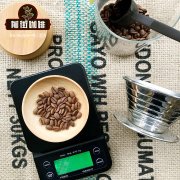
What are the top ten coffee bean brands and the top ten global coffee chain brands illy Coffee?
Professional coffee knowledge exchange more coffee bean information please follow the coffee workshop (Wechat official account cafe_style) list of the world's top ten coffee bean brands: 1. Starbucks (USA, founded in 1971) Starbucks coffee shop is full of strong North American flavor. Here, you can taste more than 30 kinds of coffee from Central America, Africa and Indonesia.
- Next
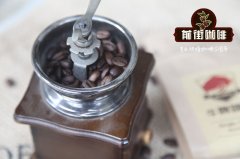
What brand of coffee beans with good quality and low price? What parts should you pay attention to when choosing coffee beans?
Professional coffee knowledge exchange more coffee bean information please follow the coffee workshop (Wechat official account cafe_style) which brand of coffee beans to choose? First of all, the purchase principle is to look at the budget. The relationship between the coffee machine and the coffee beans feels a bit like the relationship between the camera body and the lens. If you like coffee very much and have a certain pursuit of coffee quality, then if the budget conditions are sufficient,
Related
- Guji coffee producing area of Guji, Ethiopia: Humbela, Shakiso, Wulaga
- What is the most expensive variety of Qiloso in BOP multi-variety group?
- How to store the coffee beans bought home?
- Why are Yemeni coffee beans so rare now?
- Ethiopian Sidamo all Red Fruit Sun Sun Santa Vini Coffee beans
- SOE is mostly sour? What does it mean? Is it a single bean? what's the difference between it and Italian blending?
- Is Italian coffee beans suitable for making hand-brewed coffee?
- How to choose coffee beans when making cold coffee? What kind of coffee beans are suitable for making cold coffee?
- Just entered the pit to make coffee, what kind of coffee beans should be chosen?
- Can only Japan buy real Blue Mountain Coffee? What are authentic Jamaican Blue Mountain coffee beans?

